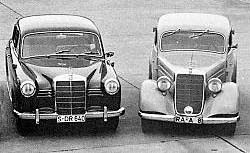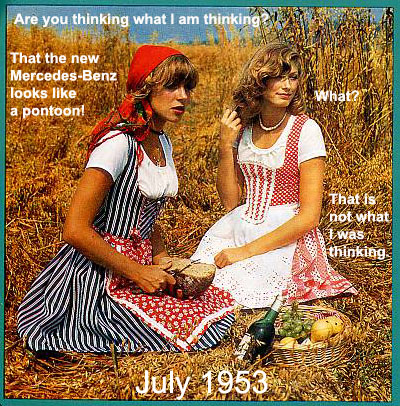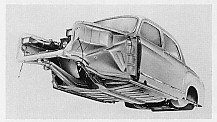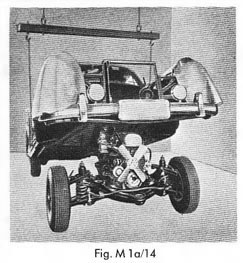First of all, ponton is the German word for pontoon. When it is used in an automotive context, the word refers to the shape of the body. The term Pontonkarosserie (pontoon body) is also used in reference to other automobile marques of the same period such as Opel, Auto-Union (DKW), Borgward (Hansa) and more. In fact, the term was used in Germany for all vehicles of standard size, with front engines and rear trunks through the 1960s. It is unclear why this former general expression was later used exclusively by Mercedes-Benz enthusiasts. The term Pontonkarosserie made reference to the fact that in 1953, the appearance of these cars did not seem to follow pre-WWII design evolution. For example, the headlamps, which had been mounted atop large free-standing fenders on earlier models like the Mercedes-Benz Type 170, were now being integrated into the fenders, which themselves had become part of the whole body.
|
Left: Mercedes-Benz Type W120 180D Ponton sedan. The overall Ponton series was produced between 1953-1962.
Right: Mercedes-Benz Type W136 170D sedan. The overall W136 series was produced between 1946-1955. |




